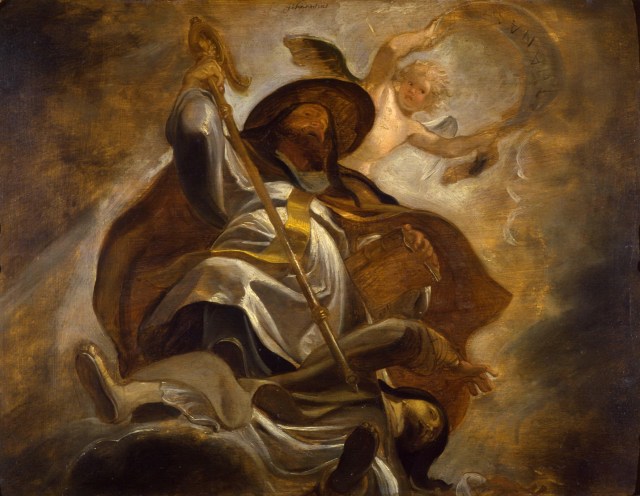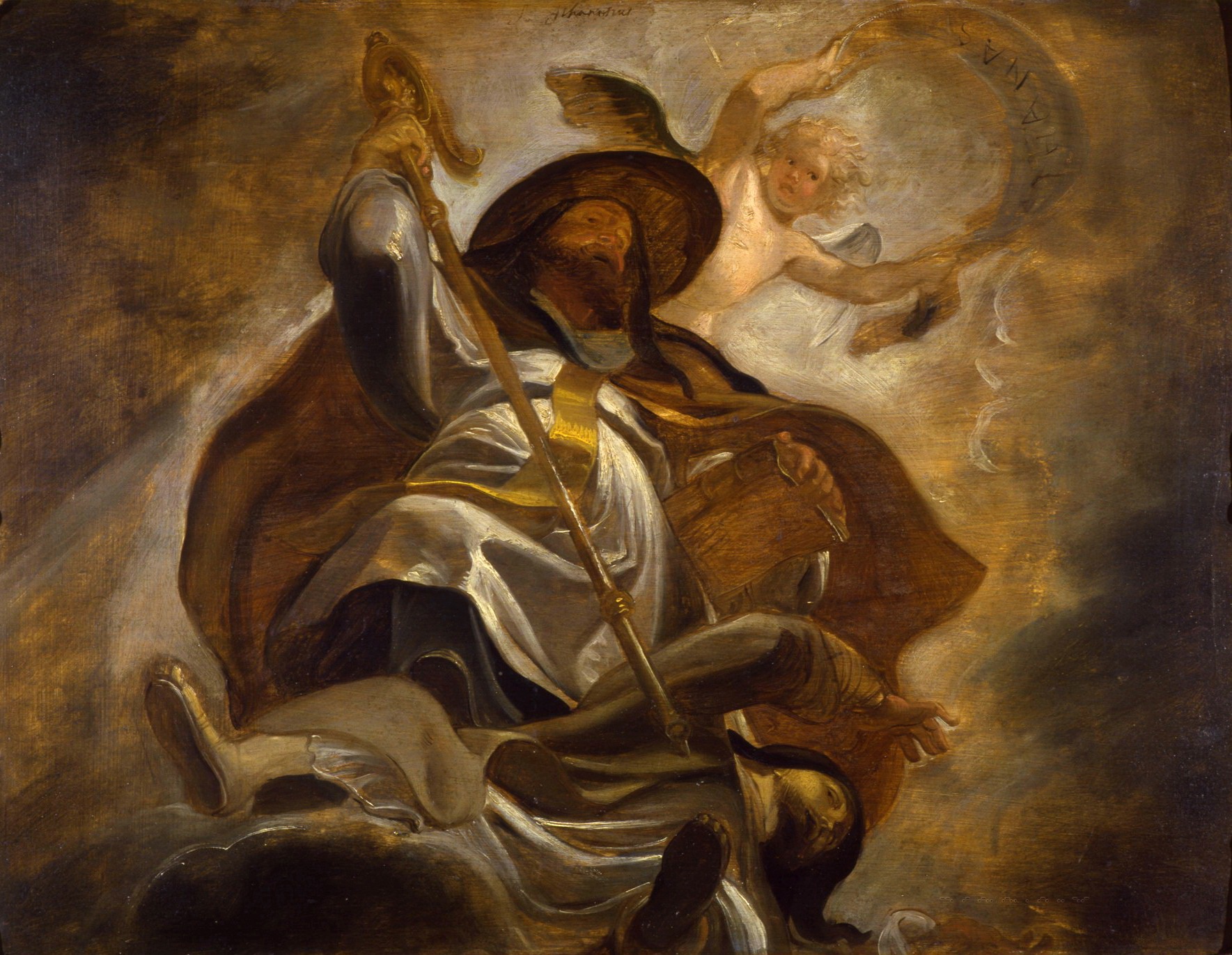Advent celebrates the most joyous news in the world, but it can feel cheapened by the holiday commercialization and the busyness of the season. That’s why I read one book every year, beyond the Bible itself, that cuts through the veneer of cultural spirituality and takes me deeper into the meaning of Christmas.
The brief yet famous book On the Incarnation—which unpacks the person and work of Christ—was written 1,700 years ago by Athanasius of Alexandria, an Egyptian bishop who profoundly shaped the early church. I believe his writings can renew the contemporary church as well.
While many agree that the Incarnation is key to the Christian faith, most Christians only think of it as representing the birth of Christ. For Athanasius, however, the doctrine includes the whole of Christ’s work, including assuming human nature and his life,death, and resurrection. In short, Athanasius teaches us to plumb the depths of Christmas by reflecting on the whole Christ who brings salvation to the whole creation and renewal to our whole lives.
Before we let Athanasius take us to the heart of the Christmas story, let’s briefly get acquainted with our guide and how he first entered the scene of church history.
As a young man, Athanasius attended the Council of Nicaea in AD 325, where hundreds of local church leaders came together to address the increasingly popular Arian teaching that Jesus had not always existed as God. The council affirmed the eternal divinity of Jesus—as summarized in the Nicene Creed, which says Jesus is “true God of true God, begotten not made, of one essence with the Father.
Yet this consensus unraveled soon after, and Christ’s deity became a con-tested doctrine for the next 50 years.
Faithful Christianity needed a champion, and Athanasius rose to the occasion, devoting his life to seeing the truth that had been established at Nicaea worked into the life of the church throughout the Christian world.
After the council, Athanasius returned to Africa, where he was born and raised, and became the bishop of Alexandria—at a time when, as fellow church father Gregory of Nazianzus once said, “the bishop of Alexandria was the bishop of the whole world.”
For 45 years, Athanasius stood unwavering in his commitment to Christ and the church. Yet his life was anything but stable. His enemies branded him the “black dwarf,” for his short stature and dark complexion, and he was exiled five times for a total of 17 years for various political or theological reasons. It was during these years, often spent in the desert, that Athanasius did much of his writing.
What can modern Christians learn from this ancient African bishop who pleaded with a Christian world teetering on the brink of grave heresy?
First, to proclaim the whole Christ, Athanasius focused on the deity of Christ. Though this doctrine may seem elementary to most Christians today, its emphasis may be more urgently needed than we realize.
A 2022 survey showed that 43 percent of US evangelicals agree with the statement “Jesus was a great teacher,but he was not God.” Athanasius would be rolling over in his grave if he heard that. And the apostle John would’ve liked a word with that 43 percent—reminding them that “in the beginning was the Word [Jesus], and the Word was with God, and the Word was God” (John 1:1).
The full humanity and divinity of Jesus is essential for biblical Christianity. But for Athanasius, advocating for Christ’s deity was not merely about upholding sound doctrine for the sake of biblical orthodoxy. His beliefs about the person of Christ were always in service to the work of Christ. In other words, without the full divinity and humanity of Jesus, he argued, the gospel is powerless to save: an empty announcement.
How, then, does the Son of God becoming a son of man bring salvation to humanity?
For Athanasius, the logic of salvation begins with God creating humanity to share in his incorruptible life and to cultivate his beautiful creation. When sin entered the world, however, death began to reign, and a process of de-creation derailed God’s good purposes.
According to Athanasius, God had a dilemma: Leaving sin unpunished would go against his character; but it would be unfitting to create humanity only to have them fall into corruption. “What then was God, being good, to do?” he asked. The only way for God to rescue humanity and uphold his character was to send his Son in the flesh to take on the sins of the world. God must become man. So, in solidarity with humanity, the divine Son assumed a human nature.
Becoming human, however, was not enough: Jesus came to die. As Athanasius says, Christ “assumed a body capable of death, in order that it, through belonging to the Word who is above all, might become in dying a sufficient exchange for all.” As the God-man, when Jesus encountered death, his humanity gave him the ability to die but his divinity gave him the power to overcome death. In this way, his crucifixion paid the debt of death so that we could have eternal life.
Gregory of Nazianzus reiterated the importance of Christ’s divine-human sacrifice, writing that Jesus had to take on flesh to save our flesh: “That which He has not assumed He has not healed, but what is united to His Godhead is also saved.”
Further, according to Athanasius, the Resurrection is a pledge of the Cross’s victory, since it reveals and inaugurates Christ’s salvation. In fact, the resurrection of Jesus provides the grounds for our resurrection, that we might experience the eternal, incorruptible life of God—which we had lost access to at the Garden of Eden.
So this Christmas, may we reflect on the paradoxical glory of our King becoming a servant, the infinite becoming an infant. But may we also remember that the manger is not the end of the story. The one born king would grow up and usher in his kingdom through the counterintuitive means of self-giving love on the cross—and then fling wide the gates of eternal life by rising from the dead.
During Christmas, we celebrate the silent night when “Christ the Savior is born.” For many American Christians, though, salvation has become an abstract and spiritual idea, as if Jesus came only to save our souls, forgive our sins, and promise us an eternity in heaven. Athanasius would see that idea is correct but not complete. Jesus came to ransom our souls but also to renew the world.
Athanasius makes this argument by appealing to the bookends of creation and re-creation in the story line of Scripture. Just as the world was created through the Word, so the world will be re-created by the Word. And by saving a fallen earth from the corruption of sin—which undoes God’s purposes by setting the world on a trajectory of de-creation and death—Jesus takes what is broken and restores it in love.
The church, as the body of Christ, also finds its place within the story of God’s grand re-creation project. We are ushered into God’s presence, invited to delight in God’s goodness, and called to participate in God’s work of renewal. Even now, God is recreating the world by grace—and he will do so until Christ returns to fully and eternally renew all things.
This message is refreshing, especially in a Western context, where our understanding of Christ’s work has often been marked by pendulum-swinging reductionism—as if Christ came to either forgive our sins & conquer the Devil. And while Athanasius prioritizes the restoration of incorruptible life (2 Tim. 1:10), being renewed in God’s image (Col. 3:10), and participating in God’s nature (2 Pet. 1:4), he embraces a comprehensive understanding of Christ’s work on our behalf. Like him, we can celebrate the many facets of salvation—such as victory, forgiveness, and reconciliation—within the broader framework of God re-creating the world through Christ.
 WikiMedia Commons
WikiMedia CommonsFor Athanasius, the biblical vision of Christ’s salvation begins with the human heart, will one day reach to the ends of creation, and touches every aspect of life in between. “So many are the Savior’s achievements that follow from His Incarnation,” Athanasius writes, “that to try to number them is like gazing at the open sea and trying to count the waves.”
Just as God is renewing creation through his Son, the Christian life is one of renewal into the image of Christ, by the Spirit, and to the glory of the Father: “Therefore, if anyone is in Christ, the new creation has come: The old has gone, the new is here!”(2 Cor. 5:17). We are given a new heart, a new spirit (Ezek. 36:26), a new mind (Rom. 12:2), a new identity, a new family (Mark 3:31–35), and the hope of living in a new world (Matt. 19:28).
Athanasius was a theologian, but he was also a pastor who loved people as much as he loved truth. He believed that our theology of the gospel applies to not only our “spirituality” or our time spent at church but also to our daily lives. Just as the apostle Paul told Timothy to watch both his doctrine and his life closely (1 Tim. 4:16), Athanasius concludes his book by exhorting his readers that biblical truth must go hand in hand with a godly life.
Christmas is a time when we receive undeserved gifts as a reflection of the greatest unearned gift—God’s grace in Christ. Yet it is also a reminder that the gospel both saves us and propels us into a life of uprooting sin, confronting injustice, and seeking God’s kingdom. Athanasius helps us understand that, within the larger narrative of Scripture, Christ’s salvation does not mean escape from creation but rather renewal of creation.
Athanasius challenges us to breakthrough the surface of simplistic spirituality of Christmas and experience the multilayered depth of its meaning. The Alexandrian bishop pleads with us to embrace the whole Christ who came to bring salvation to the whole creation and renewal to our whole lives. This Christmas, when we cry out, “Let heaven and nature sing!” may we remember that both of these are being renewed and brought together by our Savior King.
Jeremy Treat is pastor for preaching and vision at Reality LA in Los Angeles and adjunct professor of theology at Biola University. He is the author of Renewal in Christ: Athanasius on the Christian Wikimedia Commons Life and The Atonement.










